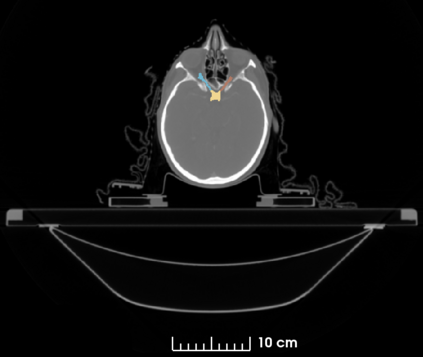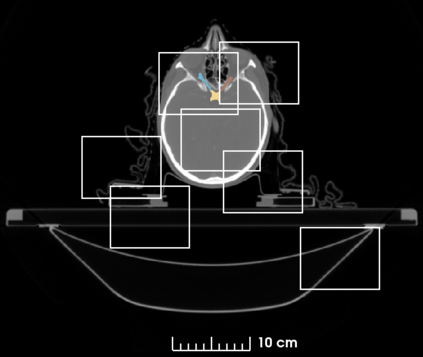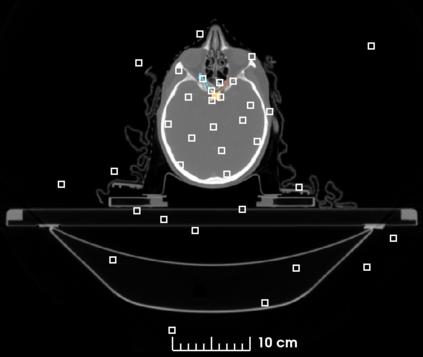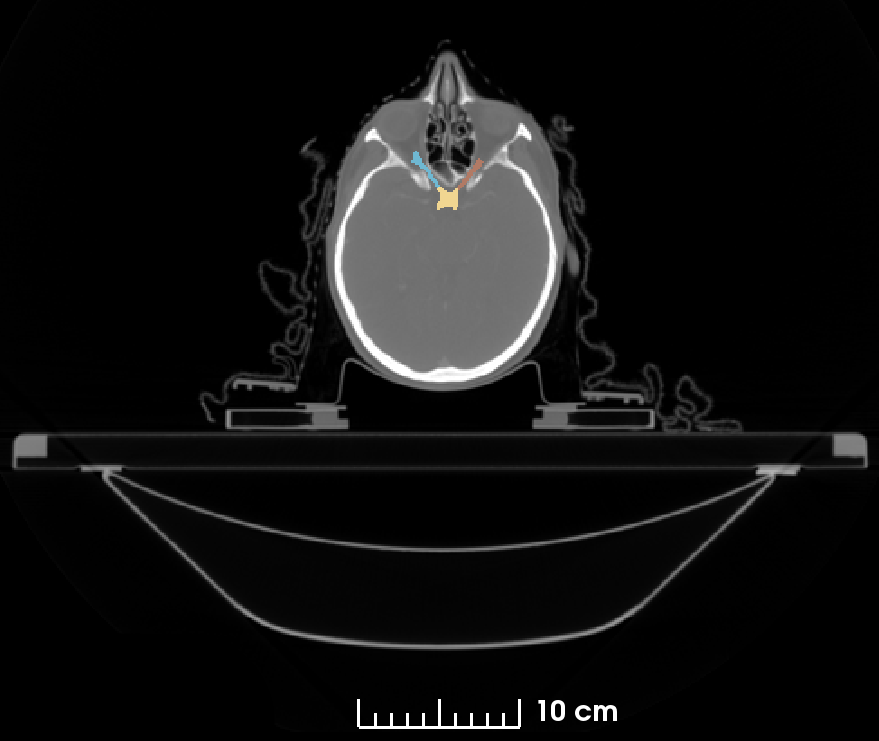The segmentation of organs at risk (OAR) is a required precondition for the cancer treatment with image guided radiation therapy. The automation of the segmentation task is therefore of high clinical relevance. Deep Learning (DL) based medical image segmentation is currently the most successful approach, but suffers from the over-presence of the background class and the anatomically given organ size difference, which is most severe in the head and neck (HAN) area. To tackle the HAN area specific class imbalance problem we first optimize the patch-size of the currently best performing general purpose segmentation framework, the nnU-Net, based on the introduced class imbalance measurement, and second, introduce the class adaptive Dice loss to further compensate for the highly imbalanced setting. Both the patch-size and the loss function are parameters with direct influence on the class imbalance and their optimization leads to a 3\% increase of the Dice score and 22% reduction of the 95% Hausdorff distance compared to the baseline, finally reaching $0.8\pm0.15$ and $3.17\pm1.7$ mm for the segmentation of seven HAN organs using a single and simple neural network. The patch-size optimization and the class adaptive Dice loss are both simply integrable in current DL based segmentation approaches and allow to increase the performance for class imbalanced segmentation tasks.
翻译:危险器官的分解(OAR)是使用图像引导辐射疗法进行癌症治疗的一个必要先决条件。因此,分解任务自动化具有很高的临床相关性。基于深度学习(DL)的医疗图像分解是目前最成功的方法,但受背景类的过度存在和解剖性器官大小差异的影响,在头部和颈部(HAN)地区,这种差异最为严重。为了解决韩地区特定类别不平衡问题,我们首先优化了目前最佳通用分解框架的补丁大小,即基于引入的分类不平衡测量的NNNU-Net,第二,引入了等级适应性骰子损失,以进一步弥补高度不平衡的设置。分解大小和损失功能都是直接影响到等级不平衡及其优化的参数,导致Dice分数增加3 ⁇,Hausdorf距离比基线减少22%,最后达到0.8\pm0.15美元和3.17\p1.7毫米,用于使用单一和简单的等级分级分解方法对7个叙利亚器官进行分解。在以简单和可调整的分级分级平整中,在可调整的分级分级分化中,分级和分级平整和分级平整是当前分级平的分级平的分级平整和分级平整。







